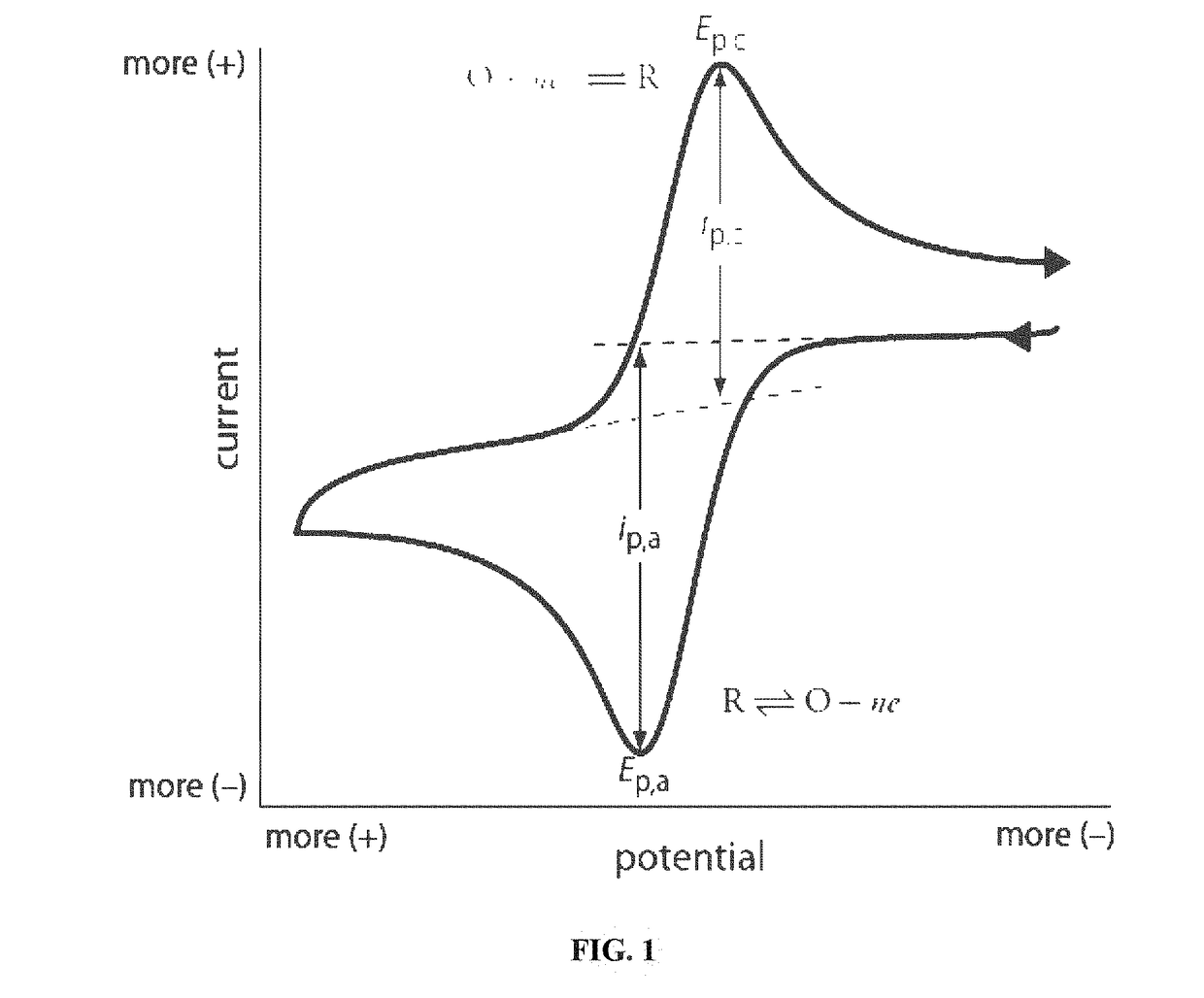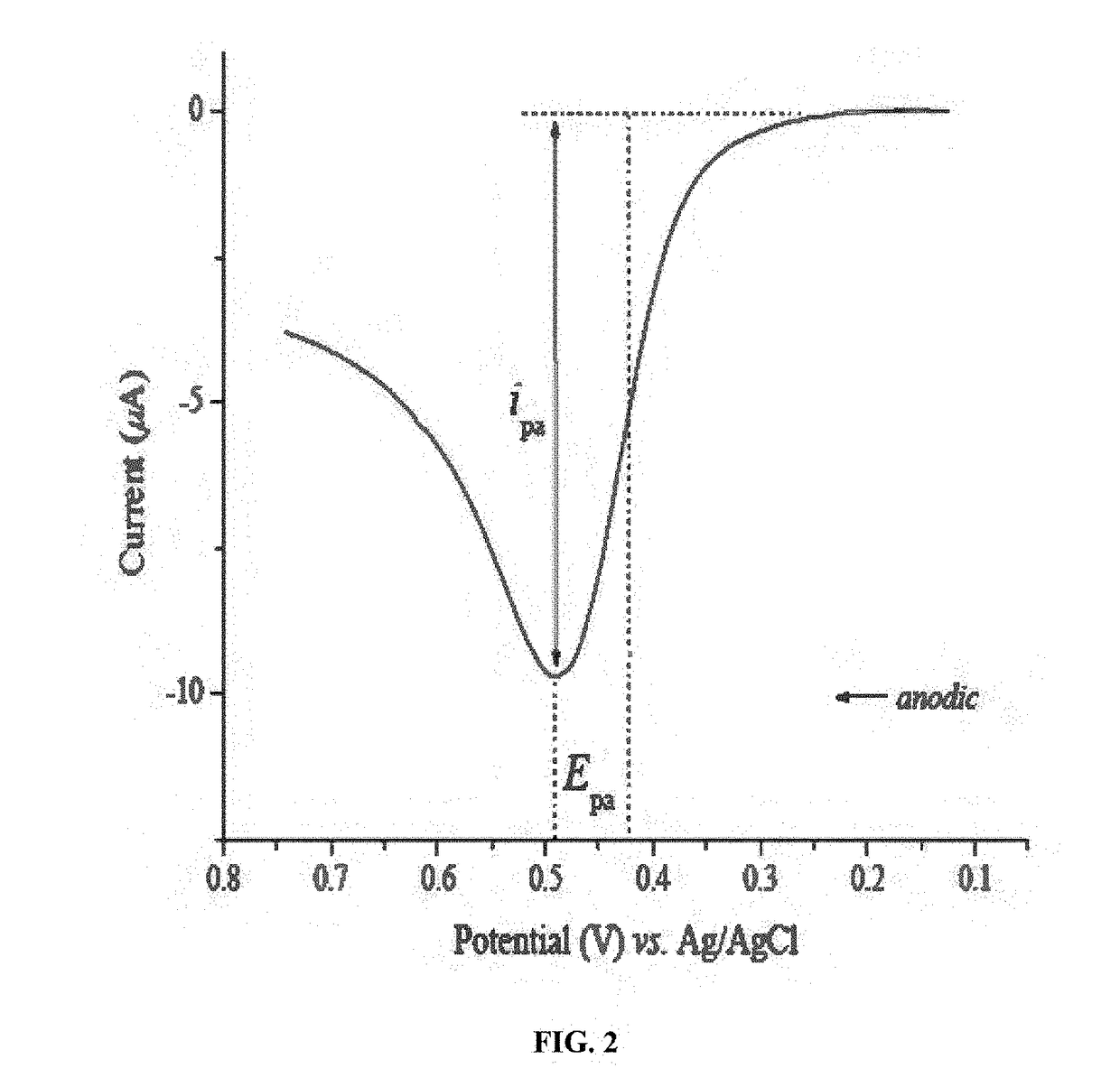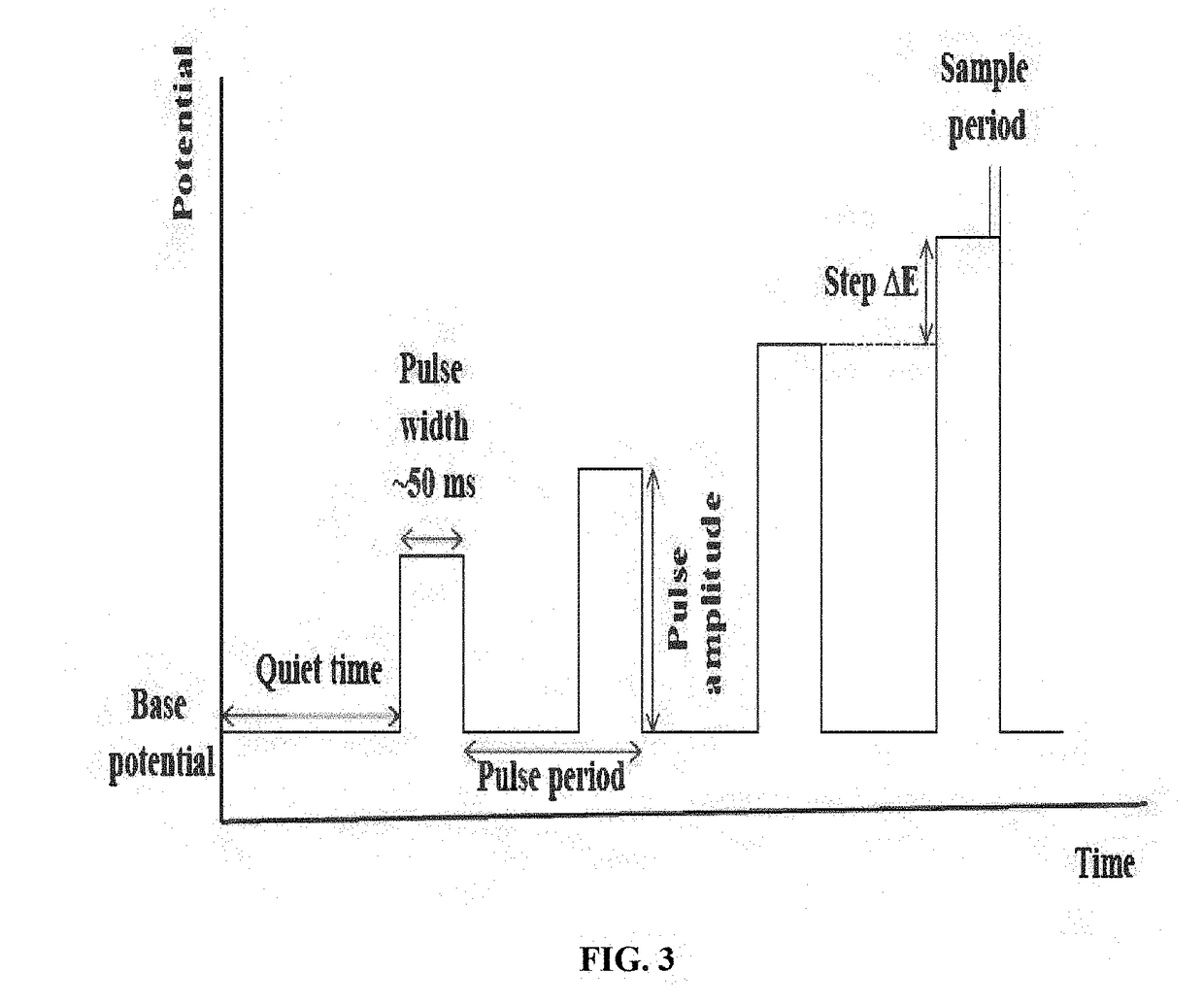Rare earth metal incorporated zeolite modified electrodes for detection and quantification of heavy metal ions in aqueous solution
- Summary
- Abstract
- Description
- Claims
- Application Information
AI Technical Summary
Benefits of technology
Problems solved by technology
Method used
Image
Examples
example 1
General Materials and Methods of Characterization for Prepared Electrodes
[0195]All solvent and reagents used were of standard purity and of analytical grade. The chemicals include: NaOH (PRS codex, Panreac Qumica), silica gel (pore size 60 {acute over (Å)}, 70-230 mesh, Sigma-Aldrich), colloidal silica (LUDOS, 40 wt %, Sigma-Aldrich), sodium silicate (reagent grade, Lot: MKBG3583, Sigma-Aldrich), fumed silica (175-225 m2 / g surface, 99.8%, Sigma-Aldrich), NaAlO2 (anhydrous, Sigma-Aldrich), NaH2PO4 and Na2HPO4 (fluka), K4Fe(CN)6 (BDH chemicals), KCl (anhydrous, Sigma-Aldrich), phosphoric acid (BDH, analar grade), NH4OH (Fisher scientific), H2SO4 (Panreac Quimica), glacial acetic acid and ammonium acetate (Fisher scientific). Solutions of Pb(II) and Cd(I) were prepared from 1000 ppm stock solutions (spectroscopic grade, BDH chemicals). All solutions were freshly prepared with double distilled water obtained from labstrong nanopure water distiller (Thermoscientific).
example 2
General Fabrication of Prepared Electrodes
[0198]In one step the mordenite zeolite (MOR) was synthesized. A gel having the molar composition 6Na2O:Al2O3:30SiO2:780H2O was synthesized according to the following procedure; 2.10 g of NaOH was dissolved in 20 g of double deionized water (DDW). To this solution, 0.63 g of NaAlO2 was added and the mixture was stirred until dissolution. Thereafter, 34.13 g of DDW was added while stirring. Finally, 6.95 g of SiO2 was added and the mixture was stirred for 1 hour (aging time). The resulting gel was then transferred to a Teflon-lined stainless steel autoclave and crystallization was carried out under hydrothermal conditions at 180° C. for 48 h. The material resulting after crystallization was centrifuged and washed with DDW until the pH dropped below 9. The sample was allowed to dry overnight at room temperature in order to obtain the crystal powder. The crystal was calcined at 550° C. to expel all organic matter present. The zeolite whose mola...
example 3
Synthesis and Characterization of a Prepared Lanthanum Impregnated Zeolite Modified Carbon Paste Electrode (La-ZMCPE)
[0201]Mordenite with different silica to alumina ratios was synthesized hydrothermally in the absence of organic template as previously described and investigated by X-ray diffraction (XRD). The XRD pattern is shown in FIG. 10. FIG. 10 shows the XRD patterns of samples synthesized with silica to alumina ratios in the range of 10-30, which reveals that an amorphous material was obtained for the sample with a silica to alumina ratio of 10 (a), while the rest gave crystalline materials. At higher silica to alumina ratios (greater than 20) (d) and (e) another phase, which was confirmed to be analcime was observed along with the mordenite crystal. The formation of analcime along with mordenite at higher silica to alumina ratios has been reported by Hincapie, et al. [Hincapie, B. O., et al., Synthesis of mordenite nanocrystals. Microporous and Mesoporous Materials, 2004. 67...
PUM
 Login to View More
Login to View More Abstract
Description
Claims
Application Information
 Login to View More
Login to View More - Generate Ideas
- Intellectual Property
- Life Sciences
- Materials
- Tech Scout
- Unparalleled Data Quality
- Higher Quality Content
- 60% Fewer Hallucinations
Browse by: Latest US Patents, China's latest patents, Technical Efficacy Thesaurus, Application Domain, Technology Topic, Popular Technical Reports.
© 2025 PatSnap. All rights reserved.Legal|Privacy policy|Modern Slavery Act Transparency Statement|Sitemap|About US| Contact US: help@patsnap.com



